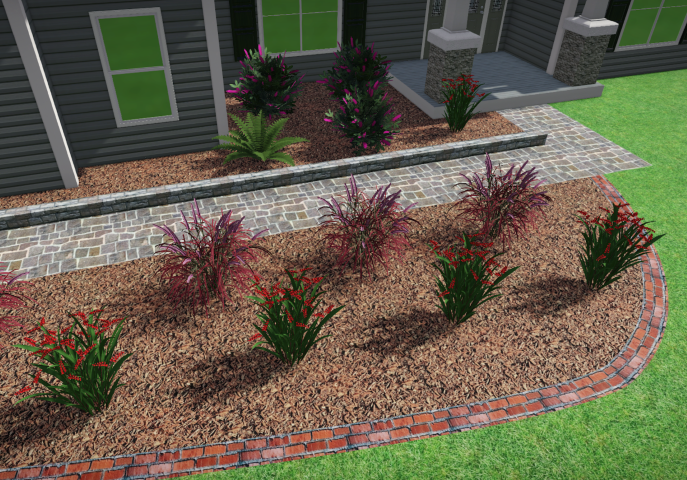Guide to Managing Pests in Seattle Yards
Maintaining a healthy yard in Seattle requires vigilance and proactive care, especially with the variety of pests that can disrupt the growth and beauty of your plants. Effective pest management involves a combination of preventive measures, identifying symptoms early, and using sustainable interventions. Here’s a practical guide for managing pests in Seattle yards, focusing on eco-friendly methods to keep your garden thriving.
1. Regular Checking for Problems
Regular inspections are essential to catch potential issues before they escalate into more severe problems. Look for signs of pests or diseases like discolored leaves, wilting, or holes in the foliage. By checking your plants weekly, especially during spring and summer, you can identify and address pest problems early.
Tip: Set a routine to inspect your garden regularly, particularly in the warmer months when pests are most active.
2. Identify Symptoms for Correct Treatment
Accurately identifying the symptoms of pests and diseases ensures the correct treatment is applied. For example, leaf spots may indicate a fungal infection, while holes in leaves could suggest damage from caterpillars or beetles. Understanding the symptoms of common pests and diseases in Seattle will help prevent further damage.
Tip: Learn the typical signs of pests and diseases, such as slug damage or fungal issues caused by Seattle’s wet climate. Early identification is key to minimizing the impact.
3. Factors Contributing to Problems
Problems in the garden often arise due to poor care, weather conditions, or incorrect plant placement. For example, a tree planted too close to a building might lack sunlight and airflow, making it more prone to mold or disease. Properly understanding these factors can help prevent pest issues and improve overall plant health.
Tip: Ensure your plants are in the right conditions for thriving—consider soil type, sunlight, and drainage when planting, and adjust based on seasonal weather patterns.
4. Use Least Toxic Solutions First
Before turning to harsh chemicals, consider using natural or homemade remedies to manage pests. For instance, a mixture of garlic and water can be effective against aphids. Seattle gardeners often use organic solutions like neem oil, soap sprays, or companion planting, which can help reduce pest damage without harming the environment.
Tip: Try organic treatments as the first line of defense. Chemical treatments should be a last resort to minimize the impact on the local ecosystem.
5. Keep the Garden Tidy and Allow Air Circulation
A clean garden with good air circulation reduces the spread of diseases and deters pests. Regularly remove fallen leaves and weeds to ensure healthy airflow between plants. Overcrowded or unkempt gardens attract pests like slugs, snails, and aphids, and can promote fungal infections.
Tip: Space your plants properly to prevent overcrowding and encourage airflow, making it harder for pests to establish themselves.
6. Weed Control with Mulch
Mulch serves as a natural barrier to weeds, preventing them from competing with your plants for nutrients. In Seattle’s dry summer months, mulch is also helpful for retaining soil moisture. Organic mulches like wood chips, straw, or bark chips are ideal for keeping your garden healthy and free of weeds.
Tip: Use organic mulches to both suppress weeds and conserve moisture, particularly beneficial for Seattle’s varying weather conditions.
7. Proactive Pest Defense with Barriers
Physical barriers like fences, tree wraps, or netting are effective at protecting plants from larger pests such as rabbits, deer, and birds. For example, fencing around a vegetable garden can prevent deer from grazing, while netting on fruit trees can deter birds and insects.
Tip: Install tree wraps or netting for fruit trees to protect produce, and use fences around vegetable gardens to keep larger pests away. Physical barriers are essential in a city like Seattle, where wildlife is common.
Task Breakdown for Pest Management
| Task | Priority | Time Needed | Frequency | Tips |
|---|---|---|---|---|
| Regular Checking for Problems | High | 10-15 minutes | Weekly | Inspect plants for signs of pests or diseases, especially in spring and summer. |
| Identify Symptoms for Correct Treatment | High | Varies depending on the issue | As needed | Learn common pest and disease symptoms like leaf spots for fungal infections or holes from insects. |
| Factors Contributing to Problems | Medium | 30 minutes to 1 hour | Seasonal | Ensure proper plant placement considering sunlight, soil type, and drainage for optimal plant health. |
| Use Least Toxic Solutions First | Medium | 15-30 minutes | As needed | Start with organic solutions like neem oil or soap sprays before using chemical treatments. |
| Keep the Garden Tidy and Allow Air Circulation | High | 1 hour | Weekly | Remove fallen leaves and weeds; space plants to avoid overcrowding and promote air circulation. |
| Weed Control with Mulch | Medium | 1-2 hours | Seasonal | Use organic mulch like bark chips or straw to prevent weed growth and retain soil moisture. |
| Proactive Pest Defense with Barriers | Low | 1-3 hours | As needed | Install fences or netting to protect plants from larger pests like rabbits, deer, or birds. |
Final Thoughts
Managing pests in Seattle’s unique climate requires both preventative care and timely interventions. By following the steps above and using sustainable, eco-friendly solutions, you can protect your garden and enjoy a healthy, thriving outdoor space. With regular inspections, careful attention to plant health, and physical barriers, you can keep pests at bay and ensure the beauty of your landscape year after year.



















